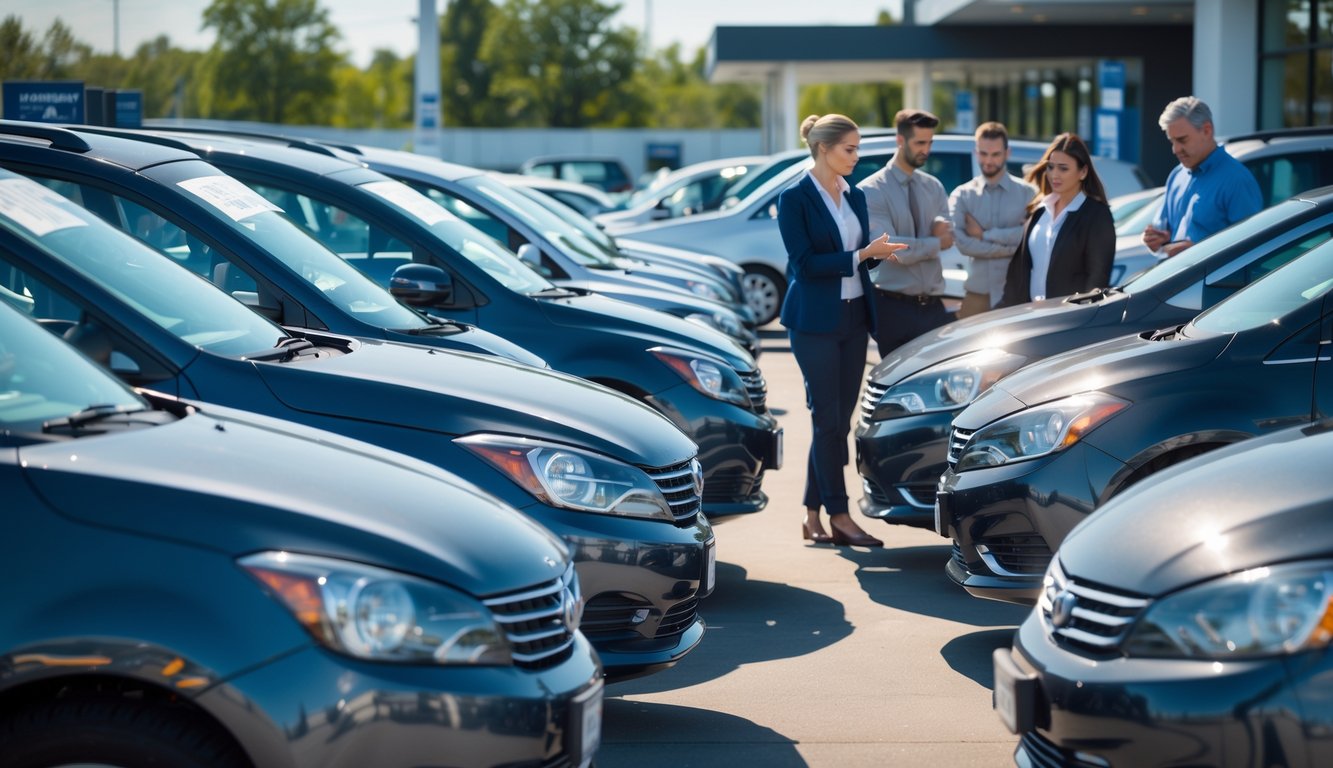
Comparing Today’s Prices to Recent Highs

Two years ago, used Rams, Civics, even that goofy Prius next door, were going for numbers that made me want to just walk everywhere. But it’s not like prices just tanked in one big swoop—my old clients keep texting me, totally confused, because the local prices look nothing like those pretty national trend graphs on CarGurus.
Year-over-Year Price Drops
It’s nuts how fast prices dropped—May 2022, Manheim’s index hit 236.3, and NADA listed a basic 2017 Camry at $21,400. Now? That same Camry’s down to $16,250 (Cox Automotive, June 2025). That’s a 23% drop for basic sedans. I almost bought a Subaru Outback last fall for $29k, glad I held off—now they’re pushing them below $24k with barely any miles.
Dealers aren’t even hiding it. “Clearance” emails everywhere. My friend in wholesale says inventory’s moving 15–30% below last year’s book value, especially anything over 60k miles. But even “Certified Pre-Owned” stuff just sits. Nobody wants to explain why 2023 hybrids lost value twice as fast—ask five people, get five random answers: interest rates, EV updates, whatever.
Regional Differences in Pricing
Midwest dealers? I get three different alerts every week for a 2021 F-150 XL Crew Cab, but in California, same truck’s listed $3k higher, even after all the drops. Texas is its own planet—rental fleet overload means high-mileage SUVs are dirt cheap. NADA’s midyear 2025 briefing showed Northeast urban dealers clinging to last year’s prices, sometimes only cutting 6% instead of 20%. If you’re trading in, good luck—lowball city.
Check this out—regional median prices for a 2024 Honda CR-V EX (50k miles):
| Region | Median Price (USD) |
|---|---|
| Midwest | $22,600 |
| Northeast | $24,000 |
| South | $21,850 |
| West | $23,300 |
No rhyme or reason. If you cross state lines or shop online, it’s just chaos. Had a client buy from Minneapolis and ship to Phoenix—after a $1,500 carrier fee, still saved $2,800 on a boring RAV4. Some call it “market adjustment.” I call it a mess.
Risks and Rewards of Buying Used Cars Now

Every time I see one of those “used car prices down 10%” headlines, I just remember last summer’s circus. It’s weirdly stressful—prices drop, but it doesn’t make buying feel any easier. The CarMax reps complain, “inventory’s moving faster, wait too long and you’re out of luck,” but my mechanic just rants about hidden rust, repos, and dealer drama.
Potential Savings
I see markdowns—$3,000 off a 2022 Civic—but I still double-check KBB and, suspiciously, the listings cluster just under “fair price,” not much lower. Friends keep sending screenshots of “deals,” mostly certified pre-owned SUVs (Escape, Tucson, whatever) finally under pandemic highs. J.D. Power says average used transaction price hit $26,606 in June 2025, finally close to 2021 levels.
Supposedly inventory’s up 25% year-over-year (Edmunds blames faster new car production), so dealers try every gimmick—“free maintenance,” “no payments for 90 days,” all that. Never trust the fine print. Every trip to a lot is just haggling: high interest rates (7%+ on lots of used loans), weird sticker discounts, and some finance guy pushing “rust proofing” or “roadside” add-ons to pad the sale.
Depreciation Concerns
Everyone says cars are money pits. It’s almost funny—2023 Camry XSE, 6,000 miles, $2,400 under sticker, and it lost another $500 in value after an oil change. Times says Black Book data shows depreciation got worse in Q2 2025, especially for small crossovers. The fastest-dropping stuff? Midsize sedans and EVs, down nearly 14% in six months.
Long-term? Who even knows. SUVs stayed steady in 2023, but EV battery prices bounce all over—up to $5,000 swings. My neighbor bragged about “upgrading” for less monthly, then realized his old car wasn’t as underwater as the new one, and nobody tells you gap insurance doesn’t care about the market tanking. And then there are cars (Mustangs, 4Runners) that just refuse to drop, ever. It’s a lottery, not a science.
Hidden Pitfalls in Fast-Moving Markets
Dealerships love calling this an “opportunity market.” I’d call it a mess. Sketchy title histories, more flood cars slipping through—Carfax is supposed to catch those, but, well, April’s FTC fines say otherwise. I watched my friend buy a Nissan Rogue the other month—supposedly “new to stock”—and neither of us noticed the odometer rollback until, what, four weeks in? Those pop-up resellers, they just vanish when the paperwork gets ugly.
Auctions? Total chaos. Lease returns dumped in piles. My buddy at Manheim swears repossessions are way up, and now lenders just shove salvage cars back onto lots without even a glance. I almost fell for a suspiciously cheap 2021 Kia. Three warning lights after 15 miles, and the pre-purchase inspection, if you can call it that, cost $400 (used to be $120, right?). Even the indie shops can’t promise they’ll catch digital odometer hacks. My insurance guy—he’s so jumpy about anything under $10k lately—just shook his head and said, “That market’s a minefield for honest buyers.” Not exactly reassuring.
